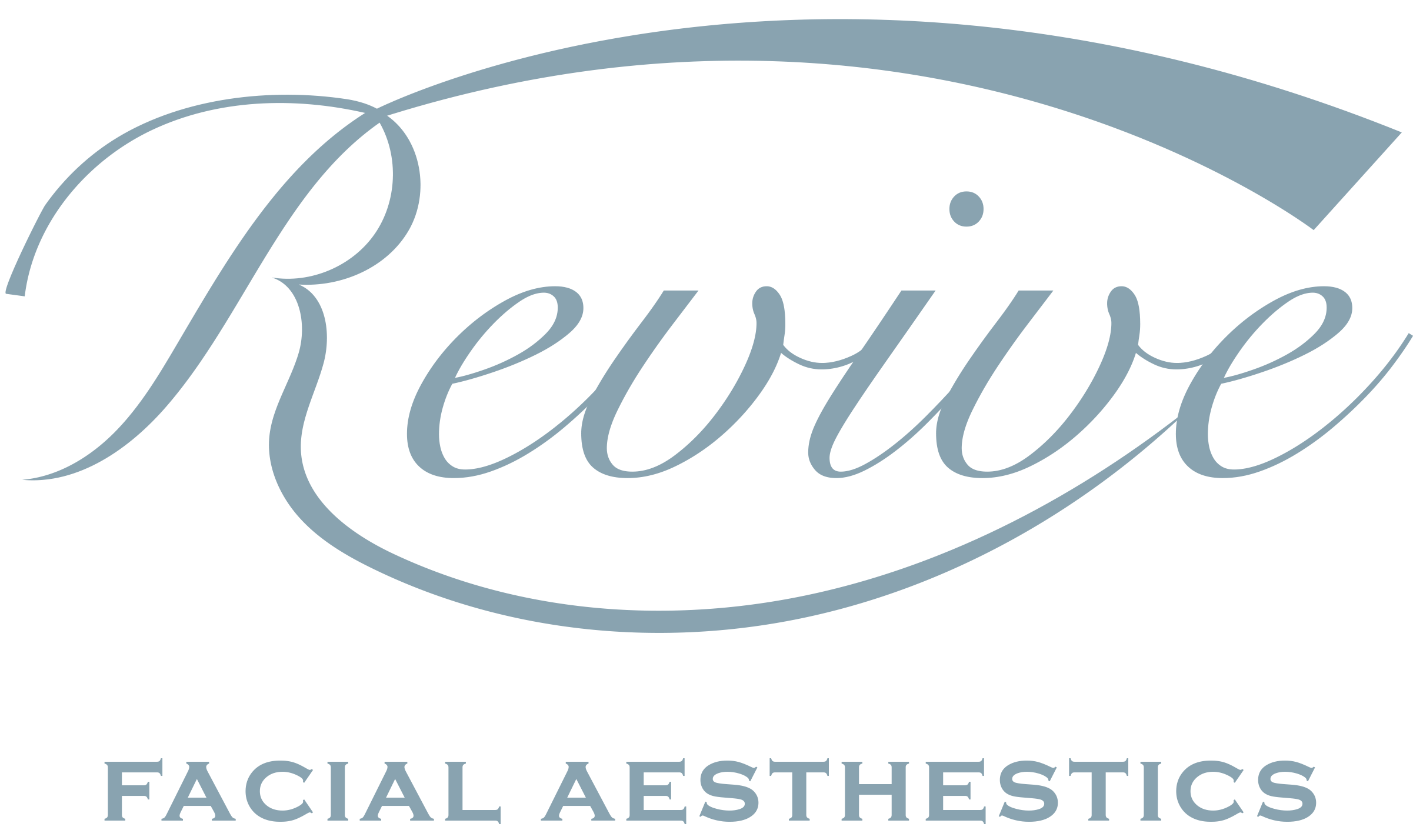FAQs
Whether you're a man or a woman, facial aesthetics can help enhance your natural beauty and boost your confidence. On this page, you will find the answers to some of the most commonly asked questions we get asked:
Frequently Asked Questions
Facial rejuvenation is a broad term that encompasses various non-surgical procedures aimed at improving the appearance of the face. It can address common signs of aging, such as wrinkles, fine lines, sagging skin, and uneven skin texture.
The great thing about facial rejuvenation is that it's not just for women! Men can also benefit from these treatments. In fact, more and more men are seeking out cosmetic procedures to enhance their appearance and boost their confidence.
Whether you're a man or a woman considering facial rejuvenation, it's important to consult with an experienced professional who can assess your specific needs and recommend the most appropriate treatments for you. Everyone's skin is unique, so personalized treatment plans are crucial in achieving natural-looking results.
Assess your own goals and expectations. Are you looking to reduce wrinkles or fine lines? Do you want to improve skin texture or tone? Facial rejuvenation can address these concerns and more, so understanding what improvements you desire will help determine if it's suitable for you.
Consult with our qualified professionals at Revive Facial Aesthetics. A skilled practitioner will evaluate your skin condition and discuss potential treatment options based on their expertise. They will take into consideration factors such as your age, overall health, and any existing medical conditions before recommending facial rejuvenation.
Additionally, consider your lifestyle and commitment level. Some treatments may require multiple sessions or regular maintenance appointments for optimal results. If you're willing to invest time and effort in achieving long-lasting outcomes, then facial rejuvenation might be worth considering.
After undergoing IPL therapy, there are some important tips to follow in order to maximize your results and ensure proper healing.
- First and foremost, it is crucial to protect your skin from sun exposure. Sunscreen with at least SPF 30 should be applied daily, even on cloudy days. This will help prevent further damage and maintain the benefits of the treatment.
- It is also recommended to avoid any harsh skincare products or treatments for a few days after IPL therapy. Your skin may be sensitive during this time, so gentle cleansers and moisturizers are best. Additionally, it's important not to pick or scratch at any scabs or blisters that may form as they heal naturally.
- In order to minimize any potential discomfort or swelling following IPL therapy, applying cold compresses can provide relief. It's also advisable to avoid hot showers or baths for a couple of days after the treatment.
- It's essential to keep up with regular skincare routines such as cleansing, moisturizing, and exfoliating (if allowed by your healthcare provider) in order to maintain healthy-looking skin post-treatment.
By following these tips after IPL therapy, you can enhance your results and promote optimal healing for rejuvenated skin.
Opus skin resurfacing is considered a safe and effective treatment for improving the appearance of the skin. The technology used in this procedure delivers radiofrequency energy to target specific areas, stimulating collagen production and promoting skin rejuvenation.
One of the main benefits of this treatment is that it is non-invasive, meaning there are no incisions or downtime involved. This makes it a popular choice for individuals who want to improve their skin without undergoing surgery.
The safety profile of Opus skin resurfacing has been extensively studied, and it has been found to have minimal side effects and risks. However, as with any aesthetic procedure, there may be some temporary redness or swelling immediately after treatment. These symptoms typically subside within a few hours or days.
It's important to note that the safety of any cosmetic treatment ultimately depends on factors such as your individual health condition and how well you follow the post-treatment instructions provided by your healthcare provider.
The timeline for seeing results with Opus skin resurfacing can vary from person to person, as everyone's skin is unique. However, most individuals start noticing improvements in their skin texture and tone within a few days of the treatment. This initial improvement continues over time as collagen production increases and enhances the overall appearance of the skin.
It's important to keep in mind that while you may see some immediate results, optimal outcomes typically require multiple sessions spaced out over several weeks or months. The number of treatments needed depends on various factors, such as your specific goals, the condition of your skin, and your body's response to the treatment.
Additionally, it's worth mentioning that individual experiences may differ when it comes to the length of time required before significant changes are visible. Some individuals may notice more noticeable improvements sooner than others due to differences in their healing process and natural collagen production rate.
It's important to note that every person has a different pain tolerance level, so individual experiences may vary. However, most people report minimal discomfort during Botox injections.
The needles used for Botox injections are very small and thin, similar to acupuncture needles. This means that the injection process is generally quick and relatively painless. Some patients compare the sensation to a slight pinch or prick.
In addition, many practitioners use techniques such as numbing creams or ice packs to further minimize any potential discomfort. These methods help numb the area before the injection is administered.
It's worth noting that any minor discomfort experienced during the procedure typically subsides quickly after the treatment is completed. Many people find that any initial discomfort is well worth the long-lasting results they achieve with Botox.
The duration of the effects of Botox can vary from person to person, as everyone's body metabolizes the product differently. On average, however, the results of a Botox treatment typically last around three to four months. After your initial treatment, it may take a few days for the full effects to become noticeable. But once they do, you'll enjoy smoother and more youthful-looking skin in the treated areas.
As time goes on and your body gradually metabolizes the injected Botox, you may start to notice some movement returning in those previously treated areas. This is an indication that it's time for another treatment session if you wish to maintain your desired results. It's worth noting that with regular treatments over time, some individuals have reported their results lasting longer than before. This could be due to muscle memory or other factors unique to each person.
As winter approaches, you may find yourself wondering if it's really necessary to use sunscreen during the colder months. After all, the sun isn't as strong, and you're less likely to spend extended periods of time outdoors. However, the answer is a resounding yes – it is still crucial to protect your skin from harmful UV rays, even in winter.
Although the intensity of the sun's rays may be reduced during this time of year, they can still cause damage to your skin. Snow and ice can reflect sunlight and amplify its effects on your skin. This means that even on cloudy or overcast days, UV radiation can reach your skin and lead to premature aging, sunburns, and an increased risk of developing skin cancer.
Furthermore, spending more time indoors with central heating can also dry out your skin. Indoor heating systems strip moisture from the air, leading to dryness and potentially exacerbating existing conditions such as eczema or rosacea.
In order to ensure optimal protection for your skin during winter months, choose a broad-spectrum sunscreen with SPF 30 or higher, and apply it generously to any exposed areas before heading outside – don't forget about often overlooked areas like the hands and ears!
One of the biggest mistakes people make with their skin in the winter is neglecting to moisturize properly. When the weather gets colder, humidity levels drop, and indoor heating systems can further dehydrate our skin. This can lead to dryness and flakiness and even exacerbate existing skin conditions like eczema.
In order to combat this issue, it's important to choose a rich and nourishing moisturizer specifically formulated for dry or sensitive skin. Look for ingredients like hyaluronic acid, ceramides, and shea butter that help lock in moisture and restore your skin's natural barrier function.
Another mistake many people make during winter is not wearing sunscreen. Just because it's not as sunny outside doesn't mean you can skip sun protection! UV rays are still present year-round and can cause damage to your skin, even on cloudy days. Opt for a broad-spectrum sunscreen with at least SPF 30 to protect yourself from harmful UVA/UVB rays.
Excessive hot showers or baths may feel comforting during chilly winters, but they actually strip away essential oils from your skin, leaving it drier than before. Instead, opt for lukewarm water when showering or bathing and try to limit your time spent in there.
By avoiding these common mistakes and adopting a proper skincare routine tailored for winter months, you'll be able to maintain healthier-looking skin all season long!
One of the most common concerns people have about dermal fillers is whether or not they will look natural. Nobody wants to walk around with obvious signs of cosmetic enhancement! The good news is that when administered by a skilled and experienced professional, dermal fillers can provide natural-looking results.
The key to achieving a natural look with dermal fillers lies in the technique used and the choice of filler product. A skilled injector like the ones at Revive Facial Aesthetics will carefully assess your facial features, taking into consideration your unique anatomy, proportions, and desired outcome. They will then strategically place the filler in areas where it is needed most.
Modern dermal fillers are made from hyaluronic acid (HA), which is a substance naturally found in our bodies. HA-based fillers are designed to mimic the properties of naturally occurring collagen, providing subtle volume and hydration.
When it comes to dermal fillers, timing is key. While everyone's experience may vary, there are some general guidelines to consider when determining when it is safe to get another dermal filler treatment.
- First, listen to your body. Each person's skin reacts differently to treatments, so pay attention to how your skin feels and looks after each session. If you notice any discomfort or unusual reactions, consult with a medical professional before scheduling another treatment.
- In terms of timing, most experts recommend waiting at least two weeks between dermal filler sessions. This allows enough time for the initial swelling and bruising from the previous treatment to subside. It also gives your body enough time for the filler material to settle into its desired position.
- Additionally, factors such as age and metabolism can affect how long dermal fillers last in your system. Some individuals metabolize the filler more quickly than others, which means they may need more frequent touch-ups.
- The decision of when it is safe to get another dermal filler depends on individual circumstances and goals. Discussing this with a qualified practitioner will help determine the best timeline for subsequent treatments while prioritizing safety and optimal results.
Remember that every person's skin is unique – what works for one person may not work for another! So be sure to consult with our trusted professionals, who can guide you through this process based on your specific needs and desires.
Office Hours
MON - THU8:30 am - 5:00 pm
FRIBy appointments only
SAT - SUNClosed

